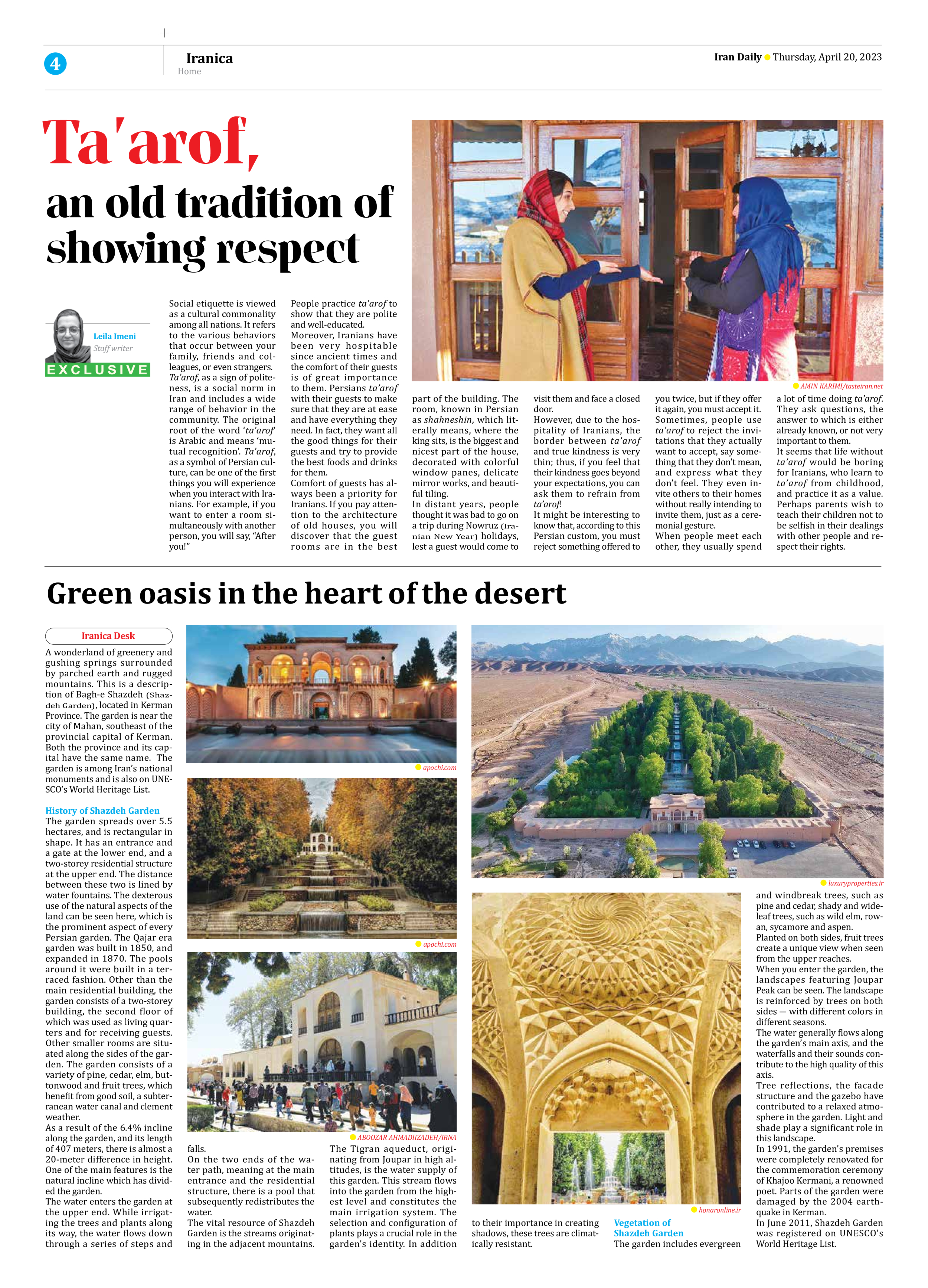
Green oasis in the heart of the desert
A wonderland of greenery and gushing springs surrounded by parched earth and rugged mountains. This is a description of Bagh-e Shazdeh (Shazdeh Garden), located in Kerman Province. The garden is near the city of Mahan, southeast of the provincial capital of Kerman. Both the province and its capital have the same name. The garden is among Iran’s national monuments and is also on UNESCO’s World Heritage List.
History of Shazdeh Garden
The garden spreads over 5.5 hectares, and is rectangular in shape. It has an entrance and a gate at the lower end, and a two-storey residential structure at the upper end. The distance between these two is lined by water fountains. The dexterous use of the natural aspects of the land can be seen here, which is the prominent aspect of every Persian garden. The Qajar era garden was built in 1850, and expanded in 1870. The pools around it were built in a terraced fashion. Other than the main residential building, the garden consists of a two-storey building, the second floor of which was used as living quarters and for receiving guests. Other smaller rooms are situated along the sides of the garden. The garden consists of a variety of pine, cedar, elm, buttonwood and fruit trees, which benefit from good soil, a subterranean water canal and clement weather.
As a result of the 6.4% incline along the garden, and its length of 407 meters, there is almost a 20-meter difference in height. One of the main features is the natural incline which has divided the garden.
The water enters the garden at the upper end. While irrigating the trees and plants along its way, the water flows down through a series of steps and falls.
On the two ends of the water path, meaning at the main entrance and the residential structure, there is a pool that subsequently redistributes the water.
The vital resource of Shazdeh Garden is the streams originating in the adjacent mountains. The Tigran aqueduct, originating from Joupar in high altitudes, is the water supply of this garden. This stream flows into the garden from the highest level and constitutes the main irrigation system. The selection and configuration of plants plays a crucial role in the garden’s identity. In addition to their importance in creating shadows, these trees are climatically resistant.
Vegetation of
Shazdeh Garden
The garden includes evergreen and windbreak trees, such as pine and cedar, shady and wide-leaf trees, such as wild elm, rowan, sycamore and aspen.
Planted on both sides, fruit trees create a unique view when seen from the upper reaches.
When you enter the garden, the landscapes featuring Joupar Peak can be seen. The landscape is reinforced by trees on both sides ― with different colors in different seasons.
The water generally flows along the garden’s main axis, and the waterfalls and their sounds contribute to the high quality of this axis.
Tree reflections, the facade structure and the gazebo have contributed to a relaxed atmosphere in the garden. Light and shade play a significant role in this landscape.
In 1991, the garden’s premises were completely renovated for the commemoration ceremony of Khajoo Kermani, a renowned poet. Parts of the garden were damaged by the 2004 earthquake in Kerman.
In June 2011, Shazdeh Garden was registered on UNESCO’s World Heritage List.







